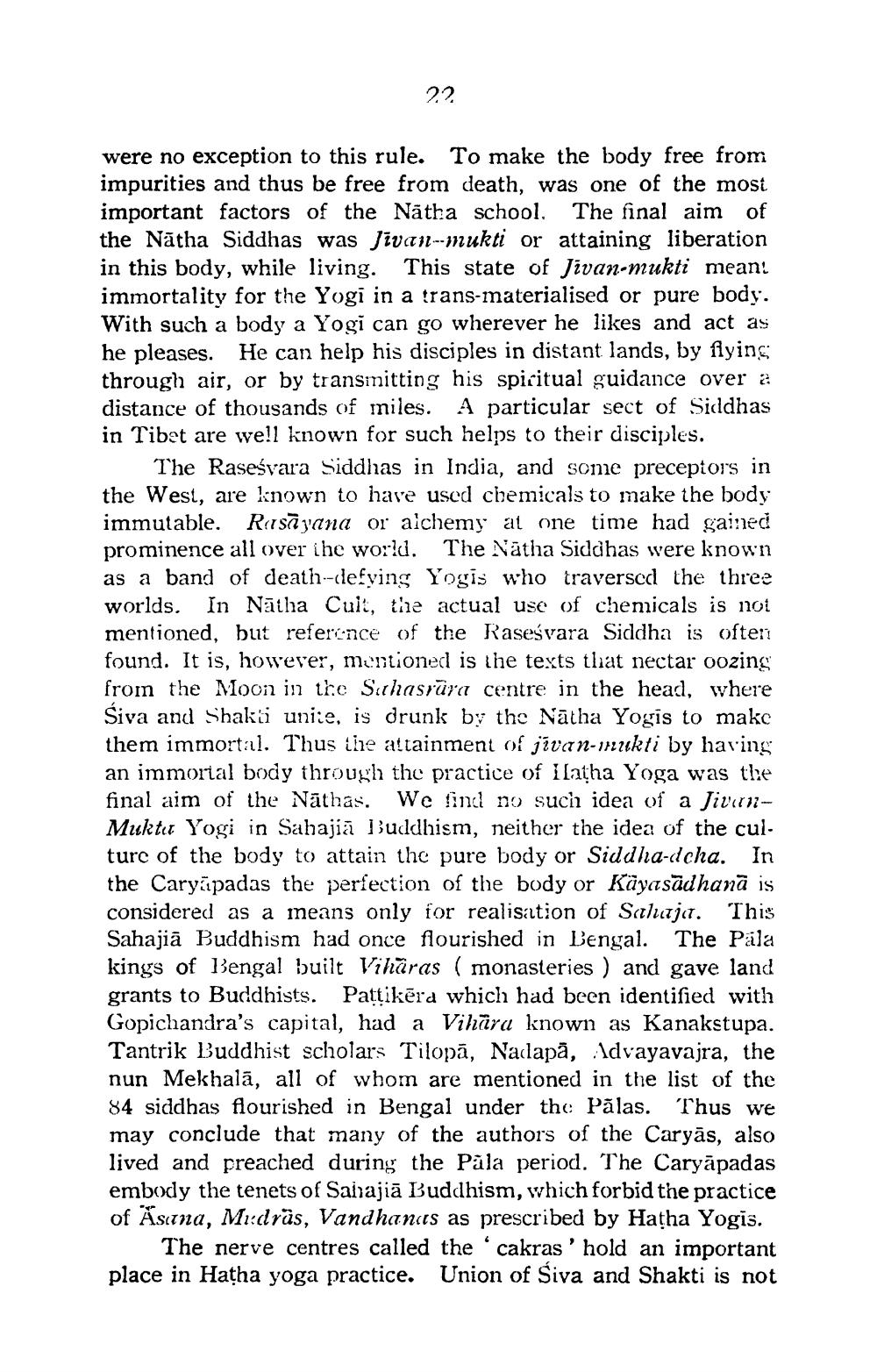________________
22
were no exception to this rule. To make the body free from impurities and thus be free from death, was one of the most important factors of the Nātha school. The final aim of the Nātha Siddhas was Jivar-mukti or attaining liberation in this body, while living. This state of Jivan-mukti mean! immortality for the Yogi in a trans-materialised or pure body. With such a body a Yogi can go wherever he likes and act as he pleases. He can help his disciples in distant lands, by flying through air, or by transmitting his spiritual guidance over a distance of thousands of miles. A particular sect of Siddhas in Tibet are we!l known for such helps to their disciples.
The Raseśvara Siddhas in India, and some preceptors in the West, are known to have used chemicals to make the body immutable. Risayana or alchemy at one time had gained prominence all over ihe world. The Nätha Siddhas were known as a band of death-clefying Yogis who traversed the three worlds. In Nātha Cuit, the actual use of chemicals is not mentioned, but reference of the Raseśvara Siddha is often found. It is, however, mentioned is the texts that nectar oozing froin the Moon in the Sahasrür centre in the head, where Siva and Shakti uni:e, is drunk by the Nātha Yogis to make them immortal. Thus the attainment of jivan-rukti by having an immortal body through the practice of Ilatha Yoga was the final aim of the Nāthas. We find no such idea of a JivunMuktu Yogi in Sahajiä Buddhism, neither the idea of the culture of the body to attain the pure body or Siddha-dcha. In the Caryūpadas the perfection of the body or Kayasādhanā is considered as a ineans only for realisation of Salajt. This Sahajiā Buddhism had once flourished in Bengal. The Pala kings of Bengal built Viharas ( monasteries ) and gave land grants to Buddhists. Pattikēra which had been identified with Gopichandra's capital, had a Vihara known as Kanakstupa. Tantrik Buddhist scholars Tilopā, Nadlapā, Idvayavajra, the nun Mekhalā, all of whom are mentioned in the list of the 84 siddhas flourished in Bengal under the Pālas. Thus we may conclude that many of the authors of the Caryās, also lived and preached during the Påla period. The Caryāpadas embody the tenets of Saiyajiā Buddhism, which forbid the practice of Asuna, Midras, Vandhanus as prescribed by Hatha Yogis.
The nerve centres called the cakras' hold an important place in Hatha yoga practice. Union of Siva and Shakti is not




